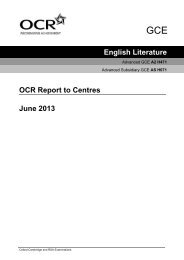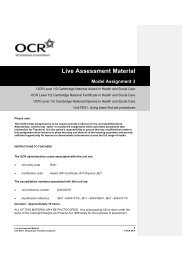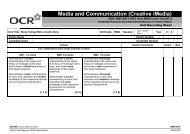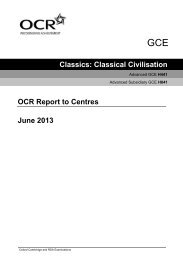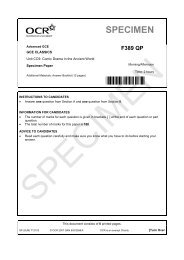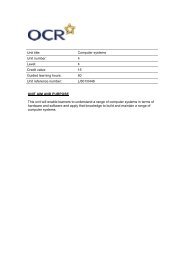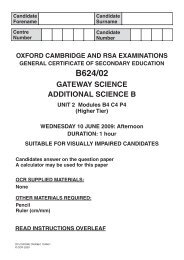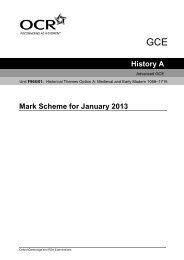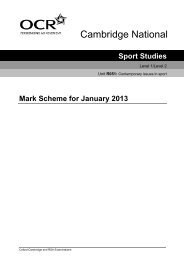Unit F335 - Chemistry by design - Specimen.PDF, 434KB - OCR
Unit F335 - Chemistry by design - Specimen.PDF, 434KB - OCR
Unit F335 - Chemistry by design - Specimen.PDF, 434KB - OCR
You also want an ePaper? Increase the reach of your titles
YUMPU automatically turns print PDFs into web optimized ePapers that Google loves.
2 The pigment chrome yellow consists of lead chromate(VI), PbCrO4. It is made <strong>by</strong> precipitation<br />
when solutions of lead nitrate and sodium chromate(VI) are mixed.<br />
(a) Explain why (VI) is used to describe the CrO4 2– ion.<br />
5<br />
................................................................................................................................................. [1]<br />
(b) Write an ionic equation for the precipitation of lead chromate(VI), showing state symbols.<br />
(c) Pigments can be identified <strong>by</strong> their visible reflectance spectra. The spectra of three<br />
pigments are shown below, lettered A, B and C.<br />
reflectance (%)<br />
400 500 600 700<br />
wavelength/nm<br />
reflectance (%)<br />
Suggest, with a reason, which is the reflectance spectrum of chrome yellow.<br />
............................................................................................................................................................<br />
............................................................................................................................................................<br />
....................................................................................................................................................... [2]<br />
(d) The diagram below helps to explain the yellow colour of the chromate ion.<br />
(i) Which electron sub-shell is shown in the diagram?<br />
A reflectance (%)<br />
B<br />
400 500 600 700<br />
wavelength/nm<br />
........................................................................................................................................ [1]<br />
(ii) What causes the splitting of the orbitals within the sub-shell?<br />
400 500 600 700<br />
wavelength/nm<br />
........................................................................................................................................ [1]<br />
C<br />
[2]<br />
[Turn over




